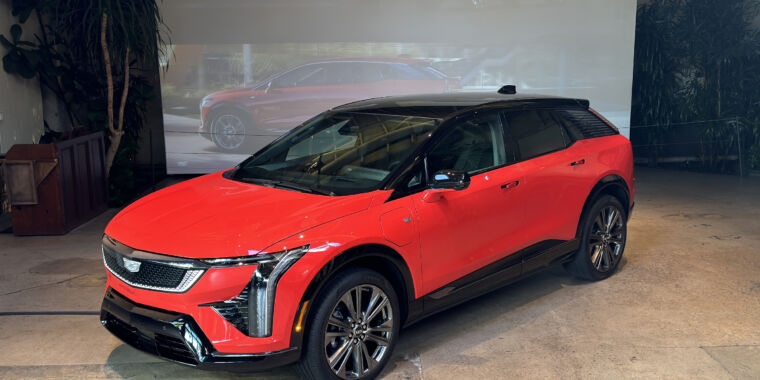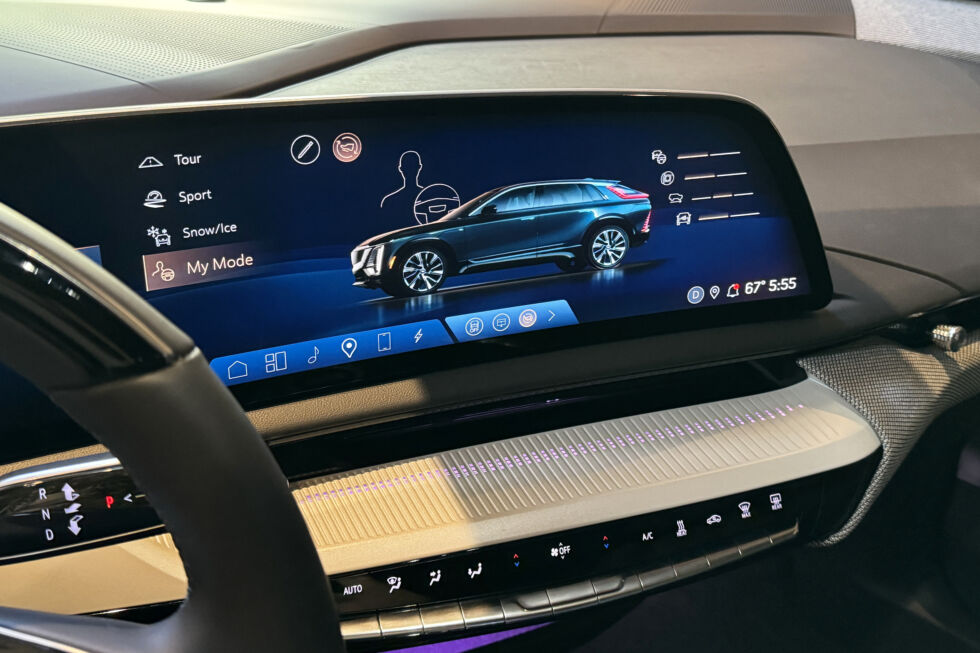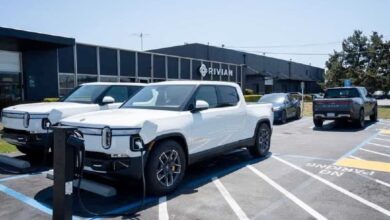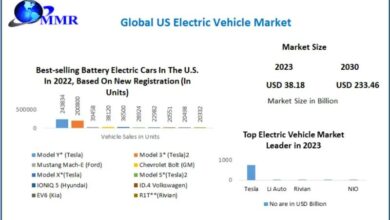This is Cadillac’s new entry-level EV, the $54,000 Optiq crossover

Michael Teo Van Runkle
Earlier this month, Cadillac showed off the all-new, all-electric 2025 Optiq to select media in downtown Los Angeles. The Optiq will slot in below the larger Lyriq, Celestiq, and Escalade IQ SUVs but is still based on GM’s steadily proliferating Ultium electric vehicle architecture.
Having driven no fewer than five different Ultium-based vehicles in the past year, I visited the Optiq preview, hoping to learn how Cadillac can differentiate this compact crossover from other offerings in an increasingly competitive segment. I also wanted to see whether GM has effectively made the case for EV converts who are looking at entry-level options versus a lower price point for the similarly specced Chevrolet Equinox EV.
In person, the Optiq’s exterior styling continues the language established by Lyriq and Celestiq, if toned down to a slightly less-aggressive futuristic level. Straked patterns on the angular, faded quarter panels make for a nice touch, though the details looked two-dimensional, as if they were stickers, until I got up close enough to inspect the use of real glass layering.
On the other hand, piano black plastic cladding around most of the lower panels comes non-negotiable, creating a slightly less premium aesthetic compared to the extensively worked-over, if somewhat familiar, interior. Here, we’re at a new level of materials and patterns compared to any other Ultium vehicle I’ve experienced—including the baffling Acura ZDX, and especially considering the starting price tag of “an estimated $54,000.” Woven textures of 100 percent recycled yarn allow for much more subtle lighting patterns than the de rigueur mood strips that so many EV manufacturers believe are necessary.
-
The Optiq is very… shiny.
Michael Teo Van Runkle -
GM continues to quote how much range its EVs can gain in 10 minutes at a DC fast charger instead of telling us how long it takes to charge to 80 percent.
Michael Teo Van Runkle -
Not stickers, actual layered glass here.
Michael Teo Van Runkle
At that price, the Optiq manages respectable, if not overwhelming, specs and stats. Cadillac hopes the 85 kWh battery pack will achieve an EPA-rated 300 miles (482 km) of range and allow customers to add up to 79 miles (127 km) of range in 10 minutes of DC fast-charging. Output steps up to 300 hp (223 kW) and 354 lb-ft (480 Nm) of torque for all trim levels, thanks to dual motors and all-wheel drive coming standard.
How will handling compare to the Equinox?
But this Cadillac era is defined by Blackwings and V packages, not dentists cruising around in land yachts. So the real challenge I laid to Caddy’s reps on hand involved driving dynamics since other Ultium cars tend to pair vague steering with a heavy chassis that seems to overwhelm suspension engineering. Thomas Schinderle, lead development engineer on the Optiq, happily fielded my questions.
“When you have the high-voltage battery enclosures as a structural element of the car,” he began, “it’s a really stiff structure overall that gives us a strong foundation to react to the steering forces.”
But that statement applies to all Ultium vehicles, I suggested. Schinderle nodded and explained that reduced electric steering assist, versus the Equinox in particular, will contribute to more resistance when the steering wheel turns off-center. Optiq’s steering ratio also tightens up significantly when compared to the Lyriq.

Michael Teo Van Runkle
“We’re leaning into this sporty, fun-to-drive aspect,” he said. “At 6 inches [152 mm] shorter wheelbase than the Lyriq, immediately, just based on physics, we’re 400 pounds [181 kg] lighter. Then you choose [antiroll] bar sizes, when I looked at roll gradient—that’s degrees per g that you’re leaning into the corner—we lowered that number for Optiq.”
I pressed for differences versus the Equinox, Chevrolet’s forthcoming compact EV that shares the same chassis as Optiq.
Damping things down
“We actually have technology on here that’s different than the Equinox,” Schinderle revealed. “We have what we’re marketing as ‘passive-plus dampers.’ Equinox does not have that.”
These dampers use a valve stack that flexes to open a dedicated orifice that allows fluid flow to reduce high-frequency chatter in the suspension. Schinderle brought up expansion cracks and frost heaves as an example, but the point was really that the “passive-plus” valving allowed his team to focus elsewhere while tuning the rest of the suspension.
“I can add control to that low-speed event,” he went on, “where you’ve got body roll and you’re coming through the big swells on the road. We’re able to tie those events down and add control to the damper without sacrificing isolation in those high-frequency events.”



